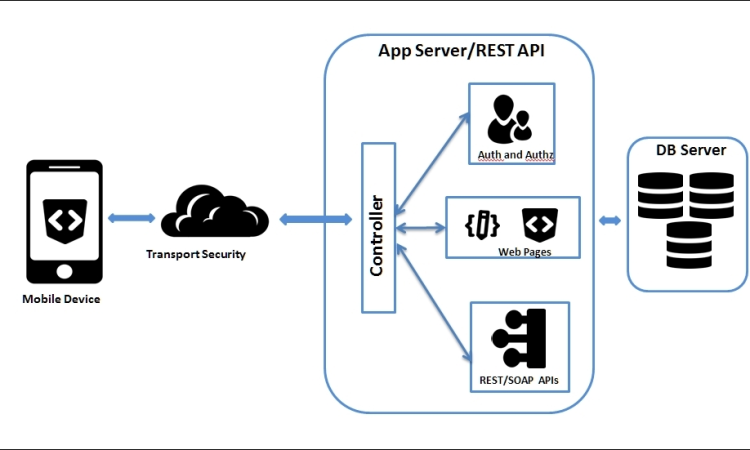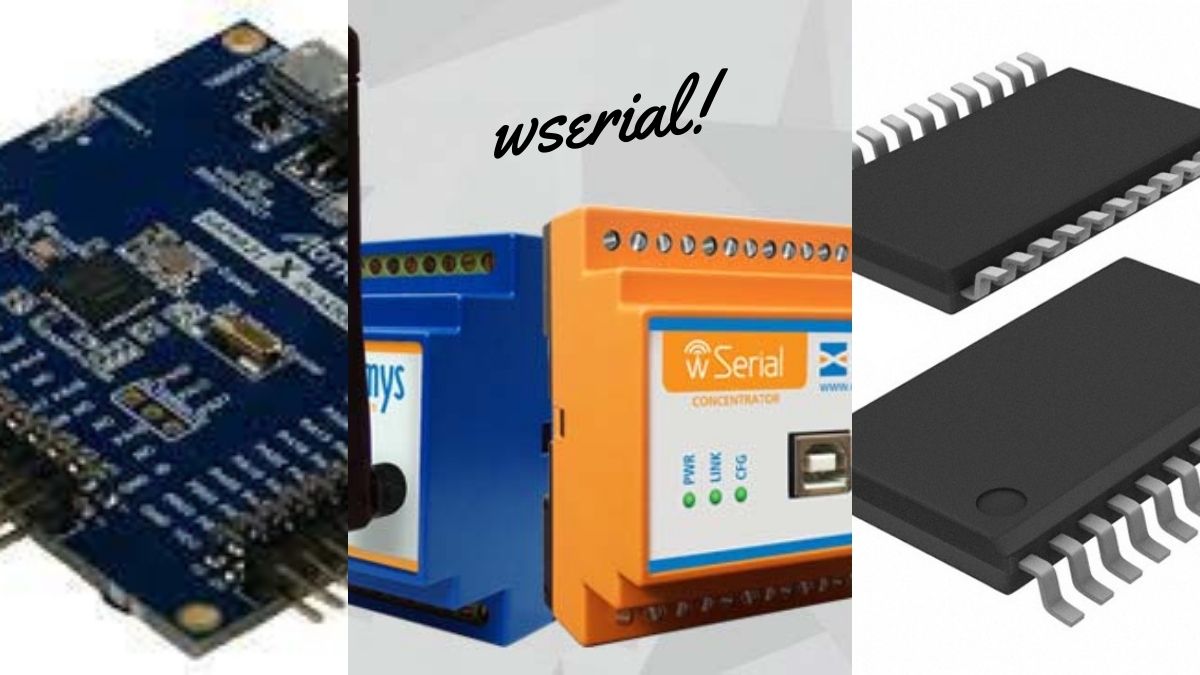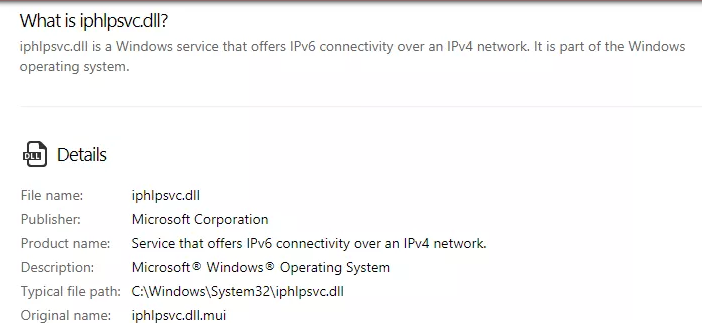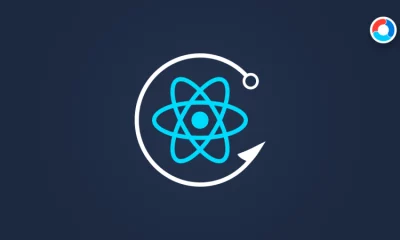Technology
What Is Mobile Backend As A Service?

Building a mobile app is a complex task. It’s not limited to coding only but also involves app deployment and testing, server configuring, and other activities. All these operations can be costly and time-consuming. Due to intense competition in the mobile application market, mobile apps should have remarkable features to gain popularity among users.
What is MbaaS and How Does It Work?
Mobile Backend as a Service (MBaaS) is a type of Backend as a Service (BaaS) platform used for building back-end infrastructure for mobile apps.
MBaaS platforms remove the necessity to create mobile application business logic and data management functions from scratch. Instead, MBaaS platforms handle all the server-related tasks, allowing mobile developers to focus more on the development of apps’ frontend layers. For this, MBaaS platforms offer ready-made backend components that mobile developers can embed in their apps.
Here is a list of the most common services provided by MBaaS:
- database management;
- user management;
- file storage;
- cloud storage;
- API endpoints;
- server hosting;
- push notifications;
- integration of social media.
Mobile developers don’t need to set up all these services when they use MBaaS platforms. All they need to do is to access the cloud and simply use these out-of-the-box solutions in their mobile app architecture.
There is a wide range of MBaaS providers to choose from, including such market leaders as AWS Amplify, Cloudkit, Firebase, Azure Mobile Apps, and others.
Advantages and Disadvantages of an MBaaS
As with any technology MBaaS has its benefits and downsides. Let’s have a closer look at them.
MBaaS advantages include:
- Reduction of the development costs
With MBaaS, mobile developers can use the prebuilt backend services for a small payment. It means that mobile developers will pay only for those tools and solutions that they really use in their app creation.
- Increase of development speed
As MBaaS provides mobile developers with ready-made backend services, they don’t need to spend hours on building and testing the same features. Moreover, they can build their apps in short development cycles which helps to release mobile apps much faster.
- Ready-to-use infrastructure
Another pleasant MBaaS feature is that it allows mobile developers to focus more on building an app rather than configuring the server-side. Hardware, software, services, and network resources are set up in the server infrastructure and are ready for use.
- Simple app integration
Mobile apps based on MBaaS can easily integrate with social networking sites such as Twitter, LinkedIn, or Google. Besides that, the MBaaS apps can connect to the existing systems, databases, and even other enterprise apps.
- Push notifications
MBaaS platforms provide mobile developers with useful frameworks that allow embedding such services as SMS, push notifications, and other types of notifications in their mobile apps.
- Performance metrics
MBaaS platforms have special tools for user analytics. They can track user behavior and provide businesses with valuable insights to increase their ROI.
- Cross-platform data delivery
MBaaS supports various client-side platforms such as iOS, Android, or web. MBaaS sends data to their clients in different formats, adjusting it to their platforms. This allows enhancing user experience as a mobile app feels and works like a native one.
- Variety of development tools
Besides offering prebuilt service packages, MBaaS platforms also provide mobile developers with sets of tools for building, testing, and deploying these services. For example, mobile engineers can use codeless API constructors, which make it easier to create new APIs.
- Enhanced security and efficiency
Mobile apps built with MBaaS are stored in the cloud, their backends are better protected from local server attacks and data losses. Above all, these platforms continuously work on the improvement of data protection techniques. For example, they provide mobile developers with an opportunity to identify users, their mobile devices and prevent unauthorized access. They also can wipe any sensitive data on stolen apps.
MBaaS Disanvantages are
- Lack of flexibility
In contrast to custom coding, MBaaS development is less flexible. It’s because of ready-made solutions that these platforms provide. For example, some MBaaS vendors don’t include database management services but provide prebuilt databases. As a result, mobile developers can’t build a database within a platform and have to use existing solutions. This way, MBaaS isn’t ideal for unconventional mobile solutions or highly complex backend architectures.
- Dependency on MBaaS platforms
Mobile apps built on MBaaS entirely rely their backends on them. Therefore, the possibility to migrate the backend architecture will depend on the service provider. Before opting for a particular MBaaS platform, make sure that you can retrieve your mobile app’s backend from it.
- Not free
MBaaS solutions are commercial projects and can’t be obtained for free. This way, for those businesses that decide to build an app with simple architecture, MBaaS platforms won’t cost much. Though, for large and complex projects MBaaS may be expensive.
Who Should Use a Mobile Backend As A Service?
MBaaS back-end development works well for various projects from mobile games to custom app development. These platforms provide a wide range of tools and services for building stable and effective mobile backend layers.
Some small businesses and startups prefer MBaaSs as they provide quite cheap and powerful solutions. While large companies implement MBaaS for building their small and medium-scale projects quickly and securely.
Summary
MBaaS platforms are a new technology that is rapidly gaining popularity in the mobile development world. Despite some MBaaS disadvantages like apps’ backend platform dependency and conventional services, many businesses consider them as a viable solution for building their mobile apps.
MBaaS platforms offer cheap and speedy backend development for apps with simple business logic and functionality. Therefore, they suit well for small and medium-sized projects. However, the implementation of MBaaS for building complex backends may lead to considerable spendings on tools and services provided on these platforms.
Technology
GoogleMcom: Revolutionizing Online Search

GoogleMcom search engines like Google have become indispensable in the modern day. Search engines are vital tools for navigating the web and finding what you need a new player in the search engine industry, is making waves with its ground-breaking strategies.
The Importance of GoogleMcom
Stands out from the competition because of its focus on the user, which manifests itself in highly customised search results. It takes into account the complexity of user requirements and the rapid pace of current life to help users quickly locate the information they need.
How to Use GoogleMcom
It’s easy to navigate you may use a web browser or the app to get to it. Just type your question into the search box once you get to and its sophisticated algorithms will do the rest.
GoogleMcom Features and Benefits
There are several advantages to using as opposed to other search engines. Among its many remarkable characteristics are:
Personalization:
Over time learns from your search history and preferences to provide you better results.
Voice Search:
The ability to do searches using voice commands is a handy feature.
Search Filter:
Filters allow you to quickly refine your search and discover exactly what you’re searching for.
The Evolution of GoogleMcom
Since its beginning has experienced rapid expansion. Once an innovative concept with game-changing potential, it’s now a robust search engine with constantly evolving algorithms.
GoogleMcom vs. Other Search Engines
When compared to Google, Bing, and Yahoo is far superior in terms of customization and speed. It’s built to learn your preferences and provide up relevant outcomes, which potentially revolutionise the search engine industry.
Tips for Optimizing Your GoogleMcom Experience
Follow these suggestions to get the most out:
Use Specific Keywords:
If you want more precise results from your searches, you should use clear and explicit language.
Explore Filters:
Try out the many search options to find the one that best suits your needs.
Bookmark Your Favorites:
Make rapid access to your favourite sites by saving them.
The Future of GoogleMcom
The road ahead for a long as the technology behind online search continues to evolve, it will become more user-friendly and efficient. Always adapting to new technologies.
GoogleMcom for Businesses
Advantages include the potential for more targeted marketing campaigns and deeper connections with existing customers powerful resource for businesses trying to expand their internet visibility.
Security and Privacy on GoogleMcom
These concerns are taken very seriously by the platform takes the security of your data and online activity very seriously.
Conclusion
Changing the way people search for information on the web poised to become an important player in defining the future of internet search as technology continues to develop.
FAQ’s
FAQ 1: What is GoogleMcom?
Cutting-edge search engine optimised for speed and precision in its results.
FAQ 2: Is GoogleMcom a Replacement for Google.com?
It’s a novel way to conduct web research.
FAQ 3: How Can I Download GoogleMcom?
Available for download from the appropriate website or app store. You may use it on a desktop computer or a mobile phone.
FAQ 4: Can I Customize GoogleMcom?
Yes, you can customize to a certain extent. You can set preferences and filters to tailor your search results to your liking.
FAQ 5: Is GoogleMcom Available on Mobile?
Mobile phone users may access On-the-go, specialised searches are now possible with this programme.
Technology
Exploring wserial: Your Ultimate Entertainment Destination

wserial it comes to the ever-changing landscape of internet streaming is a genuine game-changer. This service’s extensive catalog of shows and movies, along with its seamless interface, has completely transformed the media consumption landscape. This essay will provide a comprehensive look into exploring its history, features, benefits, and competitive advantages.
The Evolution of wserial
Early Beginnings and Development
Began as a simple project with the intention of creating a centralized database for media. Since its origin, it has gone a long way, evolving to meet the needs of today’s viewers.
Impact on the Entertainment Industry
The platform has revolutionized the entertainment business by changing how material is distributed to consumers. It has grown into a streaming industry giant, with significant sway over competing services.
Key Features of wserial
User-Friendly Interface
The straightforwardness and ease of use of interface is a major selling point. Users of all ages will appreciate the platform’s user-friendliness and the simplicity with which they may access their preferred media.
Extensive Library of Content
Large collection of movies and TV shows available to watch online. Everyone may find something they like, from old favorites to very new releases. It’s like heaven on earth for movie and TV buffs.
Availability on Multiple Devices
Used with several gadgets. It’s compatible with mobile devices, tablets, and even smart TVs. This adaptability puts fun within easy grasp whenever you need it.
Subscription Options
Provides flexible subscription options to meet your specific requirements. There’s a plan for everyone, whether you want commercial-free streaming or need to stick to a strict budget.
How to Access wserial
Step-by-Step Guide on Getting Started
Using for the first time is straightforward. To ensure a smooth entry into the community, we will guide you through the necessary processes.
Compatible Devices and Platforms
Find out what hardware and software are compatible so you may enjoy your media anywhere you choose.
Content Categories on wserial
Overview of Available Genres
Action, drama, comedy, and even fantasy may all be found on Wserial. You can always find something new and exciting to do to pass the time.
Popular TV Series and Movies
Learn about some of most well-liked shows and films. You may discover your new favorite show to watch nonstop.
Benefits of Using wserial
Convenience and Flexibility
You can watch your favorite episodes and movies whenever you want with making it more convenient than ever before.
Cost-Effectiveness
Wserial is less expensive than standard cable TV. There are a variety of membership tiers available, so you can choose one that fits your budget.
No Ads and High-Quality Streaming
Put an end to buffering and poor audio/video quality. Guarantees a high-definition, uninterrupted viewing experience.
wserial vs. Competitors
A Comparison with Other Streaming Platforms
We’ll look at wserial in comparison to other popular streaming services so you can see how it stands out.
Unique Selling Points
Learn what makes stand out from the crowd and how you may benefit from using it.
User Experience and Reviews
Testimonials from Satisfied Users
Hear firsthand accounts from happy users about their time using the service.
Ratings and Feedback
Look into what previous customers have said about the service by reading their reviews and ratings.
The Future of wserial
Upcoming Features Improvements
Learn about the exciting new features and anticipated updates coming to the near future.
Expanding the Content Library
Learn about the exciting new features and anticipated updates coming to the near future.
How wserial Aces SEO
SEO Strategies Employed by wserial
Find out how wserial achieves its high search engine rankings and what techniques are used for search engine optimization.
Conclusion
To sum up, wserial is a game-changer in the entertainment industry, not just another streaming service. It’s a must-try for anybody hoping to improve their entertainment experience due to its large collection, user-friendly design, and dedication to high-quality streaming. With you’re in for a ride full of nonstop fun.
FAQ’s
How can I subscribe to wserial?
- Wserial has a simple subscription process. You may pick the best plan for your needs right from the website.
Can I watch wserial on my smartphone?
- Smartphones and other devices are supported by wserial.
Are there regional restrictions on content?
- Due to licensing agreements, certain content may be region-locked, however still provides a vast selection of worldwide content.
Does wserial offer offline viewing?
- If you have a paid membership, you may save videos to watch later.
What sets apart from other streaming platforms?
- Wserial stands out because to its attractive interface, large library, and low membership prices.
Technology
Exploring the World of Slinguri

Slinguri has gained currency and significance in a society where adaptability and power are paramount. These clever implements have matured into dependable options for many different jobs. In this article, we’ll investigate in detail, looking into their origins, varieties, applications, and widespread impact throughout industries.
What Are Slinguri?
Strong straps known as (or “sling-oo-ree”) are often crafted from nylon or polyester. These straps are built to last and can be adjusted to fit any need come in a wide range of lengths and have many different uses because to their special properties.
The History of Slinguri
Slinguri’s roots are intricately entwined with the development of human engineering and ingenuity. Ancient peoples relied on crude slings to carry around huge loads. The contemporary developed from these original slings over time to satisfy the needs of certain industries.
Types of Slinguri
There are several varieties of each one designed for a certain task. Some typical :
- H3: Round Slinguri
- H3: Webbing Slinguri
- H3: Wire Rope Slinguri
- H3: Chain Slinguri
Every kind serves a particular purpose and offers its own set of benefits, hence their use varies widely.
How to Use Slinguri
Knowledge and skill are essential for effective slinguri use. Knowing the proper application is critical for the safety and efficiency of any task involving the fastening of a load, the lifting of heavy equipment, or the towing of a vehicle. We’ll go into the fundamentals of use in a range of contexts.
Slinguri’s Versatility
Amazing because of how many different uses there are for them. Useful to them are:H3: Construction
- H3: Warehousing
- H3: Transportation
- H3: Manufacturing
Slinguri for Outdoor Enthusiasts
Also a must-have for any outdoor lover.Useful items for securing equipment and maintaining safety when camping, trekking, or participating in adventure sports.
Slinguri for Industrial Use
Commonly used to hoist and transport large machines and equipment in industrial situations. They offer a dependable method for safeguarding the security and efficacy of production and building processes.
Slinguri in Everyday Life
Commonly used to hoist and transport large machines and equipment in industrial situations. They offer a dependable method for safeguarding the security and efficacy of production and building processes.
Safety Precautions
Using responsibly is of the utmost importance. We’ll go through some basic safety measures to take when handling these potent instruments so that nobody gets hurt.
Maintenance and Care
Maintenance and upkeep are crucial to the performance and durability Find out what you can do to make sure your lasts as long as possible.
Where to Buy Slinguri
To help you get the most out of your money if you’re looking to buy we’ll give you some pointers on where to get the highest quality.
Slinguri: A Sustainable Choice
Contributing to the increased focus on sustainability.
Pop Culture
Slinguri have left their imprint on mainstream media, including cameos in movies, TV series, and music videos. We’ll look at a few cases where really stole the show in the realm of entertainment.
Conclusion
To sum up are robust and multipurpose instruments that have found their way into many facets of human life. Provide a practical option for a wide variety of uses, from the workplace to outdoor activities and daily chores. They will do you good and help the future if you take the time to learn about them and treat them with respect.
FAQ’s
FAQ 1: Are slinguri only used in industrial settings?
In reality, it’s possible to apply to a wide variety of fields, pastimes, and professions.
FAQ 2: How do I know which type of choose for my specific needs?
Depending on your needs, select when choosing the right kind, you should think about things like load capacity, environmental issues, and safety laws.
FAQ 3: Are slinguri environmentally friendly?
The fact that many are built to last makes them preferable from an environmental standpoint.
FAQ 4: What safety precautions should I take when using?
To avoid injuries, it’s important to always check your before use and to instruct anybody who could use it.
FAQ 5: Where can I purchase high-quality?
Reputed vendors are widely available in both online and offline retail outlets. When making a purchase, be careful to do it from a reliable vendor.
-

 Marketing1 year ago
Marketing1 year agoHow Often Should You Publish on a Blog?
-

 Technology1 year ago
Technology1 year agoIPHLPSVC Services Tuning? Windows 7/10
-

 Technology1 year ago
Technology1 year agoHow AI Can Transform Healthcare
-

 REVIEWS1 year ago
REVIEWS1 year agoBest Gaming Communities Like F95zone
-

 OUTDOOR1 year ago
OUTDOOR1 year agoColoring Black and White Photo at Home
-

 Technology1 year ago
Technology1 year ago5 Best React JS UI Frameworks for Swift Prototyping
-

 REVIEWS1 year ago
REVIEWS1 year agoAll You Need to Know About KissAnime – Is it Safe and Legal?
-

 GAMING1 year ago
GAMING1 year agoPick N Mix: A Slots Adventure for Everyone
